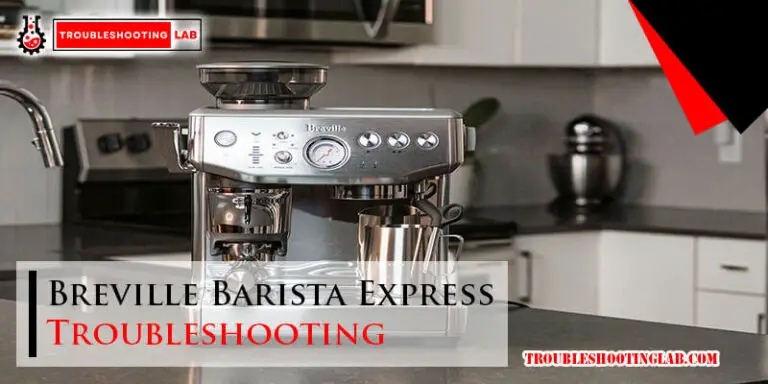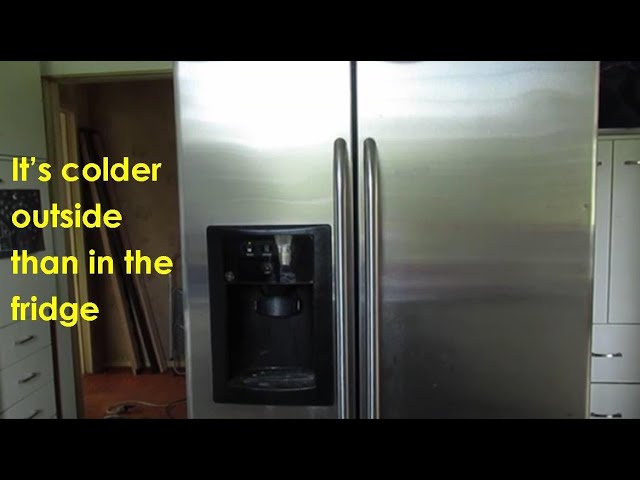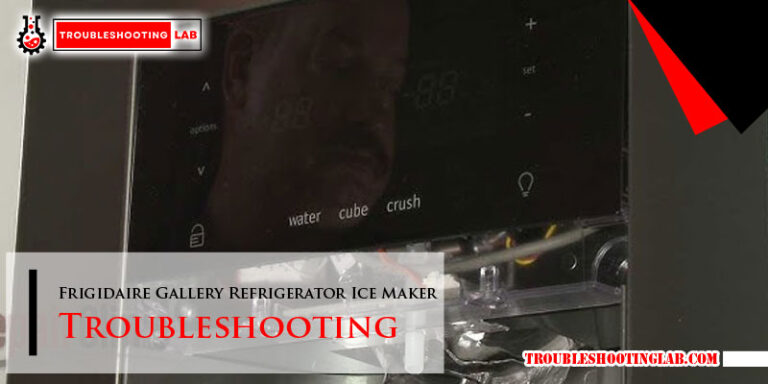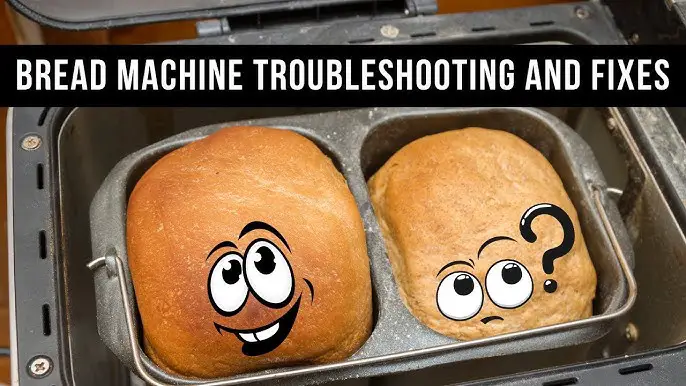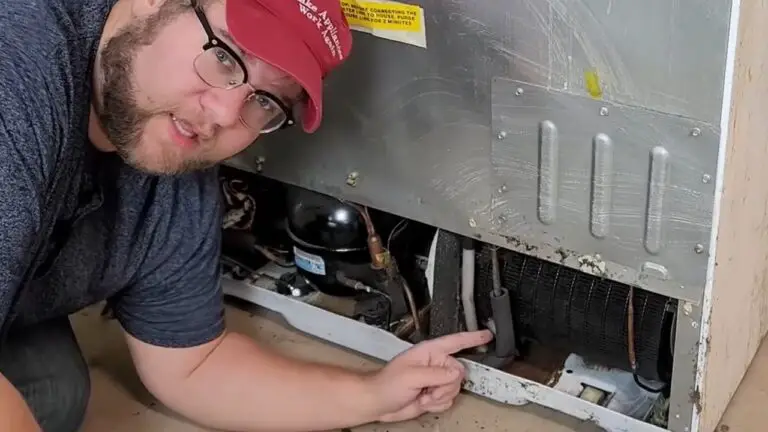Kenmore Oven Troubleshooting: Quick Fixes and Tips
Is your Kenmore oven acting up right when you need it the most? You’re not alone.
Many Kenmore oven owners face common issues that can disrupt their cooking plans. But don’t worry, you’re in the right place. Understanding how to troubleshoot these problems can save you time, money, and a lot of frustration. You’ll discover simple, effective solutions to get your oven back in perfect working condition.
Let’s dive into the world of Kenmore oven troubleshooting and tackle those pesky problems head-on. Your kitchen will thank you!
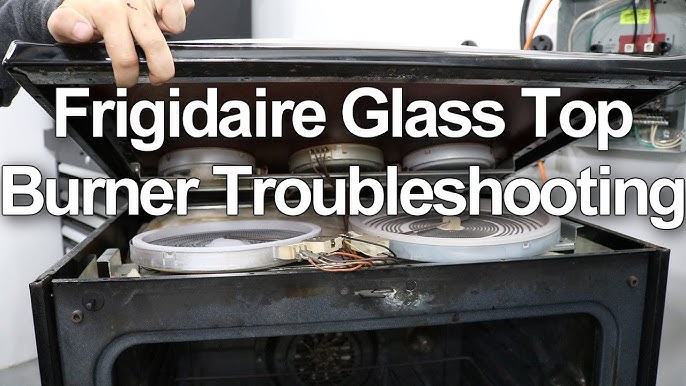
Credit: www.youtube.com
Common Issues With Kenmore Ovens
Kenmore ovens are popular for their reliability, yet like any appliance, they can run into issues. Whether it’s a temperature problem, heating malfunction, or uneven cooking, these hiccups can disrupt your culinary adventures. Understanding these common issues can not only save you time but also ensure your oven remains in top-notch condition.
Temperature Problems
Imagine baking a cake and it ends up burnt on the edges but raw in the middle. This could be a sign of temperature problems in your Kenmore oven. Have you checked the oven’s thermostat lately? It might be miscalibrated. A simple recalibration can sometimes fix the issue.
Another possibility is a faulty temperature sensor. If you’ve noticed fluctuating temperatures, replacing the sensor might be the solution. It’s a straightforward process and can save your future bakes from disaster.
Oven Not Heating
Is your oven refusing to heat up? First, check if it’s plugged in correctly. It’s surprising how often the solution is as simple as a loose plug. If the plug is fine, it could be an issue with the heating element.
The heating element might be burnt out, requiring a replacement. Many users have shared that after swapping out the heating element, their oven was back to working perfectly. Could this be your oven’s issue?
Uneven Cooking
Do your meals come out half-cooked or overly done? Uneven cooking is a common complaint. This might be due to a broken convection fan. The fan helps circulate heat evenly throughout the oven.
If the fan is functioning well, consider repositioning your oven racks. Sometimes, simply changing the rack position can drastically improve cooking results. Have you tried this simple trick yet?
Addressing these issues promptly can make your cooking experience smoother and more enjoyable. What problem are you facing with your Kenmore oven today?
Quick Fixes For Temperature Problems
Troubleshooting Kenmore oven temperature issues can be simple with a few quick steps. Check the thermostat for accurate settings. Inspect heating elements for damage and ensure proper installation.
Dealing with temperature problems in your Kenmore oven can be a real headache, especially when your dinner plans hinge on a perfectly baked dish. But before you decide to call a repair service or consider replacing your appliance, there are a few quick fixes you can try. These troubleshooting steps are not only simple but can also save you time and money. Let’s explore some easy solutions to common temperature problems.Checking The Thermostat
A malfunctioning thermostat can lead to inaccurate oven temperatures. To check if your thermostat is working properly, place an oven thermometer inside and preheat your oven to a set temperature. Compare the thermometer’s reading with your oven’s display. If there’s a noticeable difference, the thermostat might be the culprit. Adjusting the dial or replacing the thermostat could resolve this issue.Calibrating The Oven
Calibration is a straightforward process that can make a significant difference. Start by checking your oven’s manual for calibration instructions specific to your model. Typically, you can adjust the oven’s temperature settings by a few degrees to align with the thermometer reading. This small adjustment can help ensure your dishes bake evenly and thoroughly.Replacing Faulty Sensors
Temperature sensors play a crucial role in maintaining your oven’s heat consistency. If your oven’s temperature fluctuates wildly, a faulty sensor might be to blame. You can test the sensor’s resistance with a multimeter to confirm it’s working. If the readings are off, replacing the sensor is a smart move. It might sound daunting, but with a bit of patience and guidance from your oven’s manual, you can do it yourself. Have you ever faced unexpected dinner disasters because of temperature issues? Share your experiences in the comments below!Solutions For Oven Not Heating
Experiencing issues with your Kenmore oven not heating? You’re not alone. This common problem can disrupt your cooking plans. Understanding the reasons behind it can save you from frustration. Here are some practical solutions to help you diagnose and fix the problem.
Inspecting The Heating Element
The heating element is crucial for your oven’s performance. Check if it’s glowing red when turned on. If not, it might be faulty or broken. Look for visible damage like cracks or burns. Replacing a damaged heating element can restore your oven’s functionality.
Examining Electrical Connections
Loose or faulty electrical connections can prevent heating. Ensure all wires are securely connected. Inspect for any signs of wear or corrosion. Tightening or replacing faulty connections can resolve the issue. Ensure safety by disconnecting power before inspecting.
Resetting The Circuit Breaker
Sometimes, a tripped circuit breaker interrupts power supply. Locate your home’s electrical panel. Find the switch corresponding to your oven. Flip it off, then back on. This simple reset can restore power and solve heating problems.
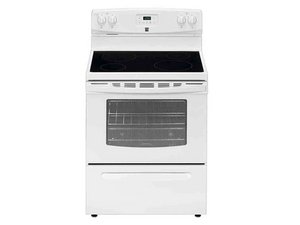
Credit: www.ifixit.com
Addressing Uneven Cooking
Uneven cooking in your Kenmore oven can be frustrating. Check the heating elements for consistent performance. Ensure the oven is properly preheated and that cookware is suitable for even heat distribution.
Uneven cooking in your Kenmore oven can be a frustrating experience, especially when you’re trying to impress your dinner guests. Have you ever placed a tray of cookies in the oven, only to find them brown on one side and pale on the other? This common issue can turn a delightful baking session into a guessing game. Let’s explore some practical solutions you can implement immediately to ensure even cooking every time.Adjusting Rack Positions
Your oven’s rack position plays a crucial role in how evenly your food cooks. Placing a dish too close to the heat source can result in overcooked tops or bottoms. Try adjusting the racks to different heights based on what you are baking. For baking pastries, the center rack usually provides the most consistent results. For roasting meats, consider moving the rack slightly lower. Experiment with different positions to see how your oven responds.Checking The Door Seal
A faulty door seal can be a silent culprit of uneven cooking. If heat escapes, the oven’s internal temperature can fluctuate. Inspect the seal for any tears or damage. Close the oven door on a piece of paper. If you can pull it out easily, the seal may need replacing. A well-sealed door keeps the heat where it belongs, ensuring your dishes cook evenly.Using Correct Bakeware
The type of bakeware you use can significantly affect cooking performance. Dark or non-stick pans absorb more heat, which can cause over-browning. Glass and ceramic dishes, on the other hand, may require longer cooking times. To ensure even cooking, use the bakeware recommended in your recipe. If you’re using a different type, you might need to adjust the cooking time. Always keep an eye on your dish as it cooks and make adjustments as needed. Implementing these tips can make a noticeable difference in your cooking. Why settle for unevenly baked cookies when a few simple adjustments can make all the difference? Your oven is a powerful tool; using it effectively can elevate your culinary creations.Maintenance Tips For Optimal Performance
Ensure your Kenmore oven performs well with these maintenance tips. Regular cleaning and checking door seals can prevent common issues. Familiarize yourself with the user manual for troubleshooting guidance.
Maintaining your Kenmore oven in top shape doesn’t have to be a daunting task. A few simple steps can keep it performing optimally for years. Let’s dive into some practical maintenance tips that will help you ensure your oven works efficiently and safely.Regular Cleaning Routine
A clean oven is a happy oven. Make it a habit to clean spills and splatters after each use. This prevents grime from building up, which can affect your oven’s performance and even alter the taste of your food. Use a mild cleaner or a homemade mixture of vinegar and baking soda to tackle stubborn stains. Ensure the oven is cool before you start cleaning to avoid any accidents. Regular cleaning not only keeps your oven looking good but also extends its lifespan.Preventing Wear And Tear
Avoid slamming the oven door; this can damage the hinges over time. Gently close it to maintain the seal that keeps heat inside. Check the oven racks and adjust them carefully to prevent bending or breaking. If you ever notice the heating isn’t consistent, it might be a sign of wear and tear. In such cases, inspect the heating elements and replace them if necessary to ensure even cooking.Scheduling Professional Inspections
Even the most diligent DIYer can miss something. Schedule a professional inspection once a year. An expert can identify potential issues that might not be obvious to you. During the inspection, professionals can clean internal components you might not have access to, like the fan or the ignition system. This small investment can save you from costly repairs in the future. Have you ever ignored a minor appliance issue that turned into a major headache? Regular maintenance could prevent that from happening with your Kenmore oven. Take action today and keep your oven in prime condition.Safety Precautions
Ensure your safety by disconnecting power before troubleshooting your Kenmore oven. Wear protective gloves to avoid burns or cuts. Double-check connections and wiring to prevent electrical hazards.
When troubleshooting a Kenmore oven, safety remains paramount. Understanding safety precautions can prevent accidents and injuries. This section outlines essential steps for safe oven troubleshooting.Handling Electrical Components
Always disconnect the oven from power before repairs. Electricity can be dangerous. Use a voltage tester to ensure no current flows. Never touch wires with bare hands. Use insulated tools to avoid electric shocks. Keep the workspace dry and clear of obstructions.Avoiding Common Hazards
Identify potential hazards before starting. Be wary of sharp edges and hot surfaces. Ensure the oven is cool before touching any parts. Stay alert for gas leaks if you use a gas oven. Ventilate the area properly to avoid inhaling fumes.Using Protective Gear
Wear gloves to protect your hands. Use safety goggles to shield your eyes. Closed-toe shoes prevent foot injuries. Aprons can protect your clothes from stains. Proper attire ensures your safety during troubleshooting.
Credit: mastermindsofappliances.com
Frequently Asked Questions
How Do I Reset My Kenmore Oven?
To reset, unplug the oven for five minutes. Plug it back in. This should reset the system.
Why Is My Kenmore Oven Not Heating?
Check if the heating element is faulty. Also, make sure the power supply is stable.
What Does F10 Error Mean On Kenmore Oven?
The F10 error indicates a temperature sensor issue. Inspect the sensor and replace if necessary.
How Do I Clean Kenmore Oven Racks?
Remove racks. Soak in warm, soapy water. Scrub gently with a sponge to remove grime.
Why Does My Kenmore Oven Make Noise?
Ovens may hum or buzz due to loose parts or fan issues. Check screws and fan for damage.
Conclusion
Troubleshooting your Kenmore oven can be straightforward. Check the basics first. Power supply issues are common. Inspect the circuit breaker. Cleaning can resolve many problems. Grease buildup affects performance. Regular maintenance is key. Keep your oven running smoothly. Use the manual for guidance.
It’s a handy resource. Professional help is available if needed. Don’t hesitate to call an expert. A well-maintained oven lasts longer. Saves you money in the long run. Stay proactive with care. Enjoy cooking without worry. Happy baking and roasting!

